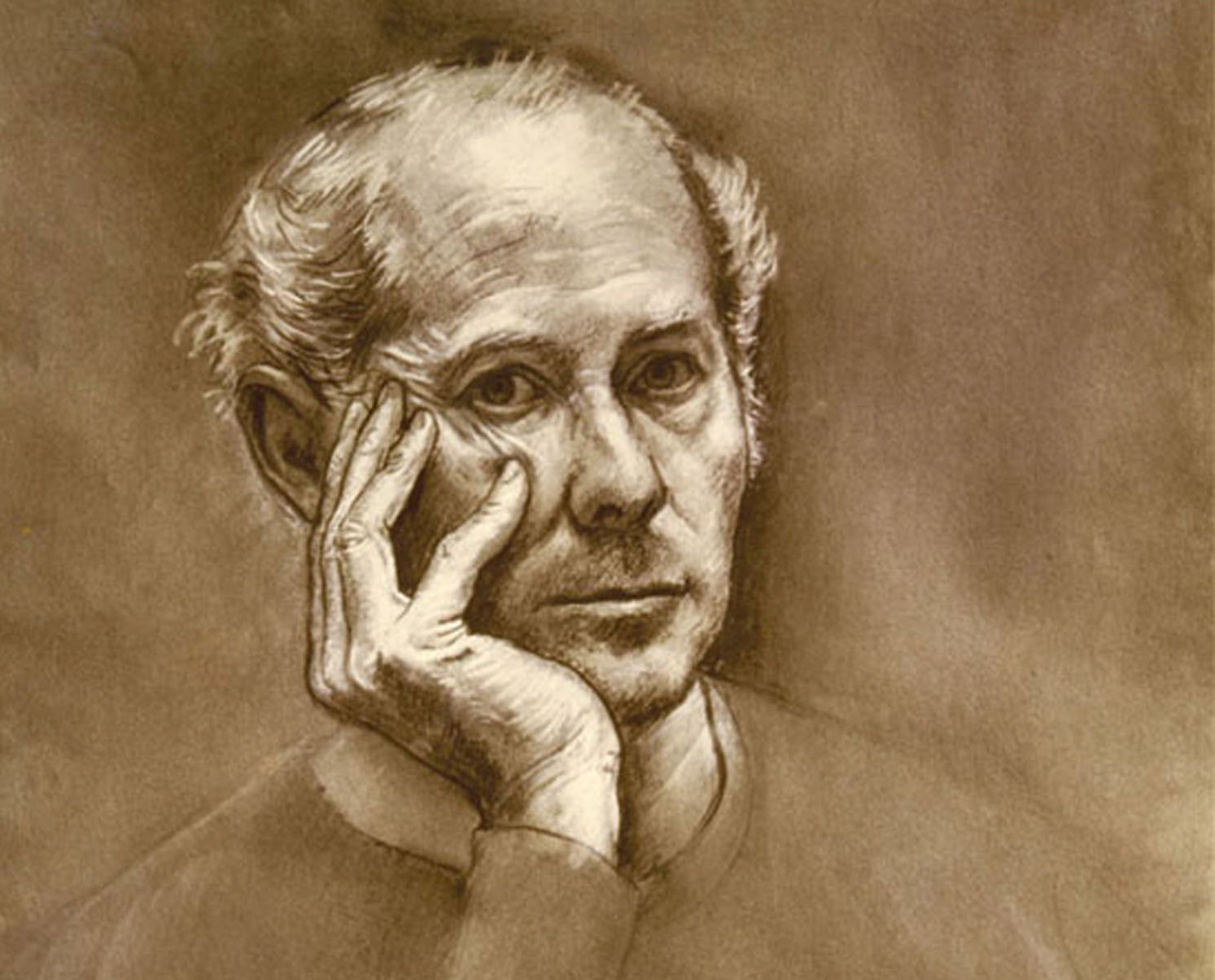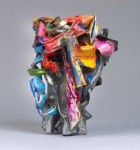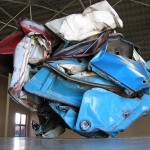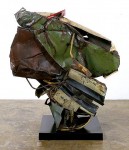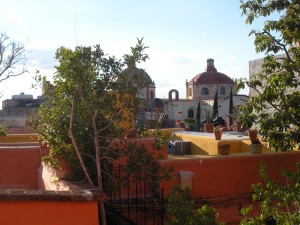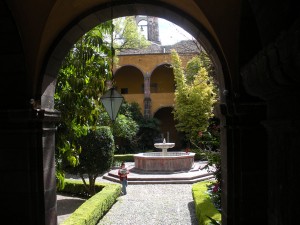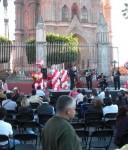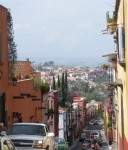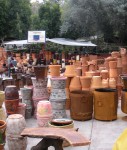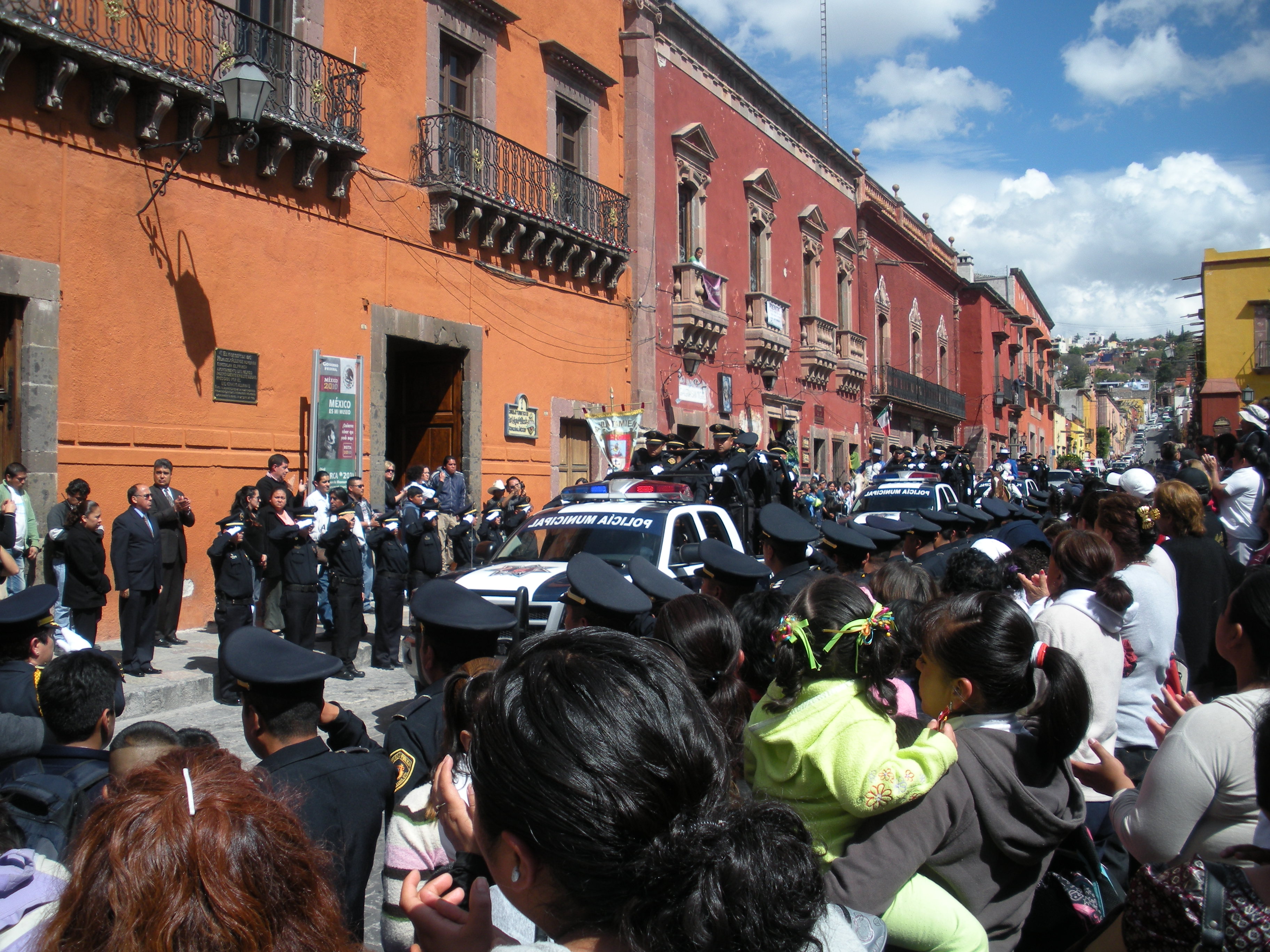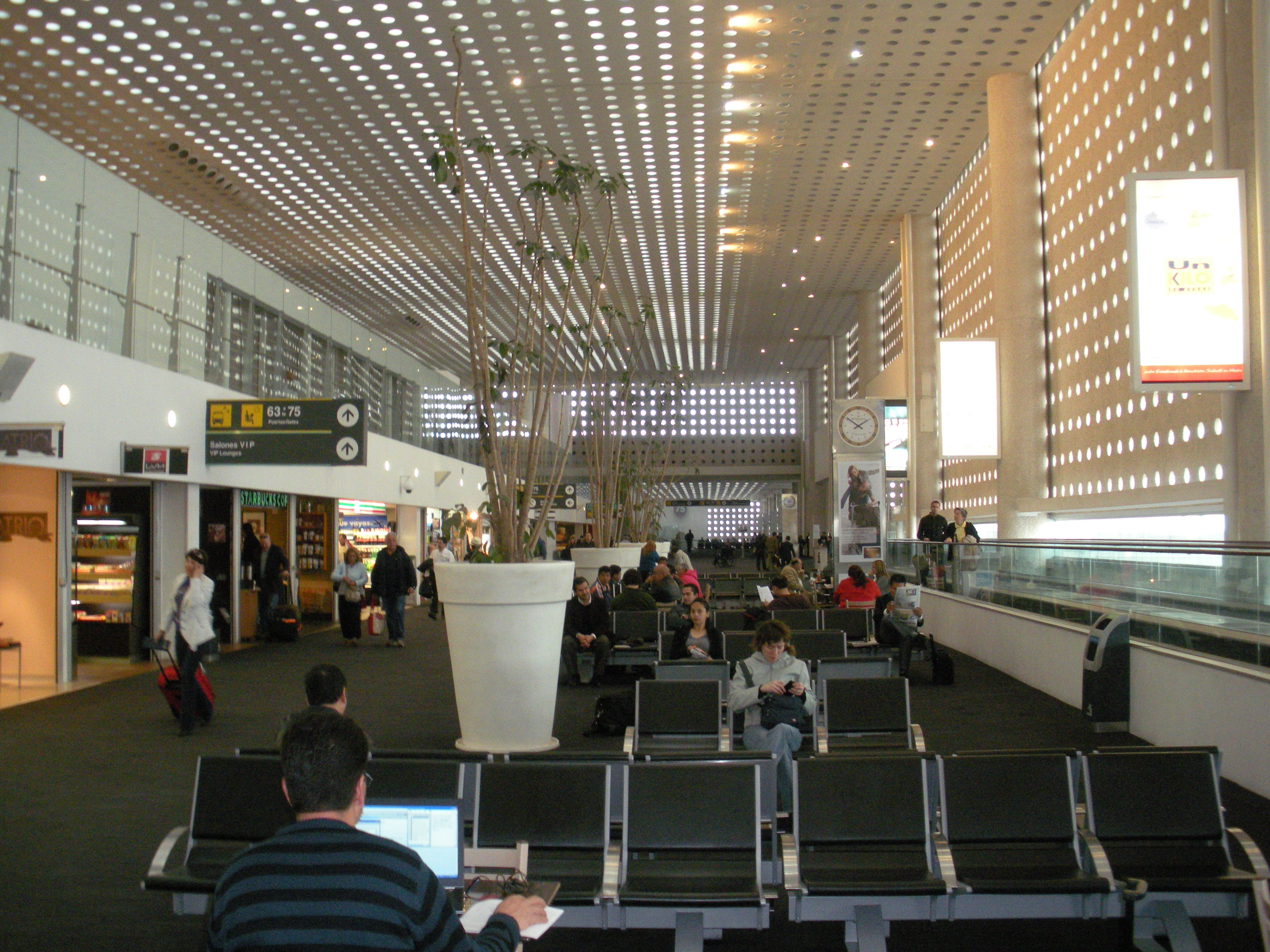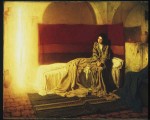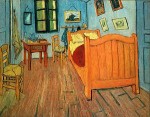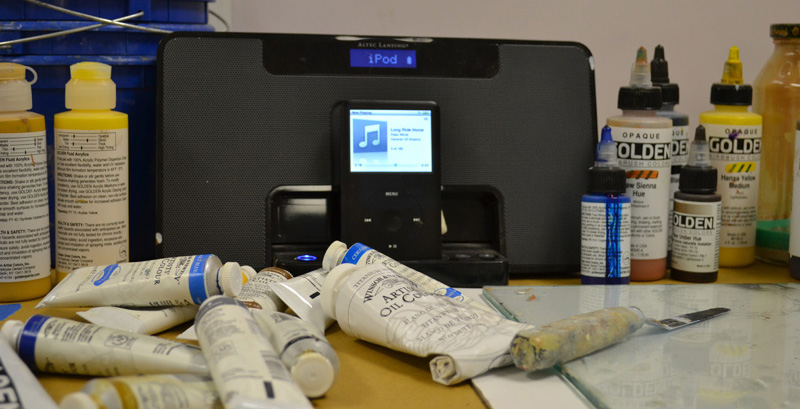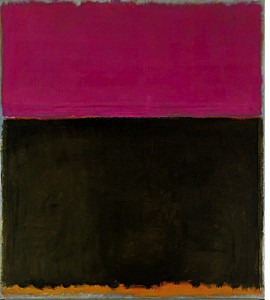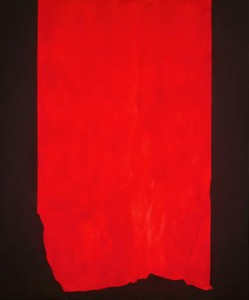Presence
My one-time acquaintance, Kalman Aron, died in 2018. Toward the end of his life, he was interviewed on NPR, CBS and other stations about his art and life. As a teen, he escaped 7 concentration camps and eventually emigrated to the US. I met him at an art opening in 2013 and wrote about him on Facebook. I heard his name recently and thought I’d post this again.
_________________________
I’ve been to Los Angeles maybe 60 or 70 times over the past 30 years. It’s a city I appreciate for many things, including its many contrasts.
I’m in LA again for a few days, as part of my ‘World Tour of the US.’ I attended an art show opening last night where a young photographer exhibited his new series to a large crowd. He’s being billed as this generation’s Jack Kerouac, although I’m not sure if many of those in attendance have read or even heard of Kerouac.
His photos depict homeless 20-somethings hobo-ing across America. The photos are large, technically proficient, and show young men and women who haven’t bathed or shaved in weeks. One captures a skanky guy giving the finger to the camera. Another is a girl with her legs spread wide, her white panties spotted with menstrual blood. A third shows two young men, passed out drunk, asleep on the ground. And more of the same. There were probably thirty photos on display.
So here’s the thing:
— The photos were priced at $12,000 each and were selling well last night.
— Some of the buyers were young, from 24 to 39, who showed up in $80,000 BMWs but were dressed in ragged jeans and grimy Ts.
I’m not sure of the sociology but I presume they buy expensive photos of homeless homies and show their solidarity with a kind of ‘fuck the man’ mentality in order to assuage their guilt and anger at being wealthy – then drive off in shiny Audis to swill $200-bottles of champagne at chi-chi clubs in West Hollywood.
After that photography show, I went to another opening across town, this one of paintings by Raimonds Staprans, an artist of modest renown whose work I admire. It was a small show and only about 20 people were in attendance…..but one of them was Kalman Aron, originally from Latvia, now 88, who was imprisoned as a child in 7 different concentration camps. He was the only member of his family to survive the Holocaust — and he survived largely because he could draw portraits of German officers. I had a lengthy talk with him and he shared his story (and the numbers on his arm).
That’s the life and culture and contrast of LA. One artist (whose name I can’t remember) draws huge crowds and acclaim with expensive photos devoid of meaning while another artist’s show draws a quiet man who’s content to merely be present.
(Kalman Aron, self-portrait)
Leave a comment
13 Mar 2019
Signs and Portents
- Sculpture by John Chamberlain
- Sculpture by John Chamberlain
- Sculpture by John Chamberlain
I’ve been driving for over 40 years. In all that time, I’ve never had an accident and have received only two tickets, both for speeding; one at 16, the other at 18.
I’ve been driving when cars crashed in front of me and behind me, when big trucks jackknifed and small trucks lost their loads, when pieces of wood bounced on the pavement and smashed against my windshield, when drivers inexplicably stopped in front of me on highways and nearly caused catastrophes. I’ve had several near-miss collisions (never my fault) and have driven through speed traps going well in excess of the limit, all with no consequences. As a result, I’ve developed an unrealistic sense of my own security.
Sometimes I park my car downtown in one of those tall garages with tight, circular ramps. I like to gun the engine all the way up to the roof and then go even faster on the way down. On more than one occasion I’ve repeated this several times in a row. I wonder what the garage staff thinks of this; I’m sure they’ve seen me.
I’ve been to Los Angeles at least 50 times over the last 25 years; so often, in fact, that a friend calls me “Mr. LA.” It’s a city I know well. On each trip after I deplane at LAX, I head to the car rental counter and, because I’m cheap, get the economy model. Usually they assign me a Kia Optima, a Korean car that’s small and fast with great maneuverability. KIA, by the way, is an acronym used by the American military. It means Killed In Action.
On almost every trip, I make it a goal to drive the Pacific Coast Highway up to Point Dume, especially at night. That experience helps restore my equalibrium and equanimity. After 10pm, the PCH is deserted. The moon casts a silver line on the ocean; the stars glow brightly in the sky. I roll down the windows and drive 60, 70, 80 miles per hour; there’s no sound except for the humming motor and the wind that whips through the car. It’s like therapy for me; it helps me relax and evaluate my life.
Sometimes I head up into the mountains. Malibu Canyon Road has tight curves and steep cliffs that drop to rocks below. In the daytime, I can open up the engine and navigate the turns pretty well; at night the road is dark so it takes a little more finesse and a lot less speed. I’m never reckless when I drive but I admit to sometimes driving faster than maybe what a prudent person should do.
A few years ago I was going through a difficult, unhappy period so I escaped for four days to LA to unwind and get some distance from the situation. As I was driving my Korean death machine, I headed south on Coldwater Canyon, down-shifting along the winding mountain road. Around a bend there was a thick plume of white smoke billowing high into the sky. Driving closer, I saw a car on fire — the intensity of which had burned and melted the car almost down to its wheels. The fire department was on the scene putting out the blaze, yet it was a shocking image, terrifying and mesmerizing.
I have an acquaintance who sees every unusual image as a sign from God. She thinks God regularly speaks to her through signs. When I saw the burning car, I wondered if this was a metaphor for my situation at the time. Was it a sign? Was my life about to explode in flames? But if it was a sign, then from whom and what did it mean? Or perhaps it wasn’t a sign at all, just a random event – and yet, why did it appear to me at this particular time and place?
I’m reminded of the work of John Chamberlain. Chamberlain was a sculptor who assembled crashed and crushed automobile parts into interesting shapes. I’m sure he pilfered car parts from the scenes of many a wreck. I find his sculptures to be lyrical, beautiful, colorful and poetic, but I can’t look at his art and not think of death. In his sculptures, I imagine some poor soul with a mangled body being cut from his car with the Jaws of Life.
A few days after the burning car incident, I was sitting in LAX waiting for my plane to depart. I looked high up into the atrium and saw a bird perched on a ledge next to a window, trapped inside, tapping its beak on the glass in a futile effort to escape.
Some people see images and think they are signs from heaven or portents of things to come. I’m not sure what I think of signs. But I am sure I like the art of John Chamberlain. I do know I was able to work myself out of my poor mental state. My life didn’t explode in flames. I continue to travel frequently to LA. And whenever I can, I still drive fast on the PCH.
6 Feb 2012
3 Days in San Miguel, part 1.
In the mid 1970s, I spent the fall semester of my junior year of college in San Miguel de Allende, a little town of about 3,000 people, 200 miles west of Mexico City, 6,000 feet up in the mountains.
My school rented a building on Calle Mesones and we had our art classes there. The days were warm, the nights cool. About 20 of my fellow students and I filled our time by making art in the day, debating art late into the evening, drinking the local beer, flirting with the señoritas and walking the town. At nights we’d visit Pan y Vino, Rafaele’s Chicken House or La Fondue, three of several restaurants where, for just a few dollars, you could buy a good meal and a mellow glass of Mexican red.
I remembered San Miguel as beautiful with lush gardens, vivid colors and friendly people. On Sunday evenings in el Jardin, the town square, the young single men and women would circle each other in a mating ritual that was quaint and charming. Elders would sit on surrounding park benches and smile approvingly.
On the feast day of San Miguel, the town turned into Pamplona. The streets were cordoned off; bulls would be turned loose and would run wild chasing down the local men who were crazy enough to test them, and then most of the town would walk the mile or two to the Plaza de Toros. It was like something out of Hemingway. We were treated to three matadors on that particular day; the first two were nothing more than journeymen bullfighters but when the third appeared, it was as if he’d been sent from central casting and San Miguel had suddenly vaulted into the big leagues.
Antonio Lomelin was tall, dark and beautiful to watch, graceful in his movements, fearless in the ring, and magnificent in his suit of lights. He taunted the bull. He commanded the bull. And with his every action, Lomelin whipped the crowd into a frenzy. They chanted a song and called him by name, first from one side of the bull ring and then the other. When it was time for the final dénouement, silence. Lomelin approached, inserted the sword and, with one clean pass through the neck, brought the bull to its knees. The mariachi band burst into song; Lomelin raised his arms in triumph and the crowd rewarded him with both ears and the tail. It was beautiful and horrible to watch, sublime and grotesque at the same time.
I saw things in San Miguel I’ve never seen anywhere else in the world and the memories have stayed with me since. I promised myself I’d go back one day, but as the children grew, as a growing business became more demanding and as tuitions increased exponentially, that promise seemed just like one more left-behind dream.
Jump ahead now 35 years to 2010. I had a business meeting to attend in Cancun and Ann suggested I make a side trip to San Miguel on the way down. I demurred, thinking I couldn’t afford the extra $1,500 it would cost. But then fate intervened and, through a most unusual circumstance, that money dropped into my lap.
I made the reservations with trepidation. My Spanish at one time had been good and in college I could hold my own in a conversation, but as I’d had no reason or occasion to keep my Spanish skills up, I could now only pick out a few words. And the violence and kidnappings that seemed to occur daily in Mexico made me rethink the trip four or five times.
But go I did. And I was surprised by what came next.
To continue this story, read ‘3 Days in San Miguel, part 2.’
30 Jan 2012
3 Days in San Miguel, part 2
-
Sunday afternoon in front of el Parroquia.
-
San Miguel, now a sprawling community.
-
Flower pots at the flower mart.
- Sunday afternoon in front of el Parroquia.
- San Miguel, now a sprawling community.
- Flower pots at the flower mart.
Accessing deeply-embedded memories is like opening doors to rooms that have long been shut.
I had the opportunity to return to San Miguel de Allende 35 years after I had spent a semester there in college. I wasn’t sure what to expect but I was both excited for the chance to see things long forgotten and apprehensive at what the experience might produce.
My journey took me from Dallas to Leon, a regional airport near Guanajuato City and the closest airport to San Miguel. It was clean, contemporary and efficient. I passed through customs with little trouble and my driver was waiting for me as I departed.
I had researched ground transportation services on the web and there were a few that offered acceptable rates, but I chose the one suggested by my hotel. It was by far the most expensive, but as I didn’t want to take any chances with getting into the wrong car with the wrong person in a foreign country, I figured the $300 round-trip car fare was worth the price.
My driver was personable and talkative. We spoke at length about my previous visit; in fact, I had lived in San Miguel before he had ever been born. He also gave me a few impromptu Spanish lessons in the car as we drove the 110 miles to San Miguel.
The mountainous terrain en route was desolate and beautiful, with long stretches of brush, cactus and tumbleweed. It reminded me of the hills outside of Taos, if you take the roundabout way to Sante Fe. In my mind, I heard the echoes of a lonesome Marty Robbins’ song as we drove through a series of one-horse towns, each with a few shacks and a cantina.
Day 1
We entered San Miguel from a direction I had not previously remembered, so as we pulled up to the outskirts of town, I got a brief sinking feeling when I saw nothing reflective of the memories I had stored for 35 years. But that passed quickly as my driver made some turns and wended his way through narrow streets and back alleys. Soon, we were in front of the Parroquia at the Jardin and it was as if I had never left.
I arrived on a Sunday afternoon and townspeople were sitting on chairs and benches, a small band played mariachi music, and young men and women were starting to congregate for ‘the walk.’ My hotel, the Casa de Sierra Nevada, was only a block away. I quickly checked in and got settled in my room, then headed back out the door.
I passed by my former apartment house, now a small hotel, and the building where we held our classes, now a furniture store. The restaurants I remembered were either gone or under new names. I also found places whose names I recognized but where I hadn’t spent any time at all. The Escuella de Bellas Artes was one such place — an architecturally rich building with lush verdant grounds that was once a convent but now an art school. Small retail stores, many selling jewelry and high-end consumer goods, had opened. Female shopkeepers were fashionably dressed. It became apparent that San Miguel had prospered in the last few decades. The town had grown into a small city of 60,000, many of them Americans, and had developed sprawl. While the historic central core of San Miguel retained its original charm, new homes and shanty towns had grown up on its outskirts.
I finished my day by dining at Tio Lucas near the Bellas Artes. The food was simple but good and I’d sampled a few of the local cervezas. By the end of dinner, it was 9pm and I headed out into the open air. San Miguel is dark and poorly lit; what little light there is at night casts deep shadows on people, cars and alleys. It’s easy for a person to recede back into a doorway at night and be completely hidden from view. The streets are long and hilly, it’s difficult to see around corners, and the sidewalks are narrow, allowing only one person to walk in one direction without stepping into the gutter. Mindful of a news story I had just read about kidnappings and murders in Mexico, I was nervous that first night walking the 5 or 6 blocks back to the hotel, but I got there without incident.
Day 2
After I had locked myself in for the evening, I realized the bells at the Parroquia, the parish church one block away, chimed every 15 minutes of every hour all through the night. Those crazy Mexicans! It was impossible to get a good night’s rest. So after a fitful sleep, I showered, dressed and headed out the door at 8am, still a bit groggy but excited to see other parts of San Miguel.
The day was cloudy and cool with a mist of rain. I had breakfast at a quaint little restaurant three blocks from the hotel. Hundreds of baskets hung from the ceiling and posters of the owner, a film actress and cabaret singer from Mexico City, adorned the walls. The posters showed her in several poses from her movie roles. She was clearly proud of her good looks and celebrity.
After breakfast I headed east to a part of town I had never really visited before. I stumbled upon a flower market with hundreds of plants in full bloom. The smell was like an aphrodesiac — fragrant, perfumy and arousing. Nearby, a basketball court was stacked high with flower pots of all shapes, sizes and colors.
For the next few hours, I wandered the streets, stopping occasionally to look into a few shops and hotels. Many of the homes are built in the Baroque colonial style, with high walls and large doors facing the street that open to spacious and colorful courtyards. There was a brass plaque on one such door, listing the word, Sculptor, next to the owner’s name. As I was peeking in a window to see if there was any activity inside, a voice from behind me asked, in English, if I had wanted to go in. Andrew was Canadian, a snow bird who spent six months every year in San Miguel. He showed me his studio, which he rents with 3 Americans — James from Detroit, June from Omaha and Mike from Cleveland. We chatted about life and art in San Miguel. I asked about home prices and was surprised to learn that the going rate for an updated home in the historic central core would run from $600,000 to $1 million US. So much for having a pied à terre in San Miguel.
By this time it was 2pm. The clouds had lifted, the sun was shining and I found a little restaurant with outdoor seating in a courtyard of shops and offices. It was shady, colorful, warm and inviting. I placed an order and was full in the moment of enjoying the day when I casually glanced over my shoulder. A local police officer, wide and powerfully built, was standing at the entrance and staring intently at me. His expression was provocative; I took it as a warning — one I inferred to mean, ‘Watch your step.’ I held his gaze for a moment, perplexed as I didn’t understand what was happening and why he might be interested in me, but then looked away. ‘Why ask for trouble?,’ I thought to myself. Two other diners at a nearby table noticed and looked in my direction. The officer left a few moments later but that brief exchange unnerved me and foreshadowed a disquieting spectacle that was to occur the following day — one which colored the remainder of my trip and which I still think about today.
For the conclusion of this story, read 3 Days in San Miguel, part 3
30 Jan 2012
3 Days in San Miguel, part 3
Violence is pervasive in all societies, of course, and it elicits a terrible human toll. But when violence visits a small picture-perfect community you think would or should be immune, the effect is all the more egregious.
I came back to San Miguel de Allende after 35 years to reconnect with a memory. And for the most part, the experience was wonderful. But on day 3, Tuesday, the last day of my trip, I received an unexpected visitor. And this particular Tuesday was not a usual Tuesday; it was Fat Tuesday, the day before the start of Lent. Fat Tuesday is traditionally a day of excess. It was to become a day to remember.
Day 3
My morning started well; it was sunny and pleasantly warm for mid-February. I was happy to be here and away from the cold, dank and overcast days typical of winter in the midwestern United States. I wanted to make the most of this last day so I arose early and walked the town, stopping for breakfast in a Starbucks, one of only a few nods to American culture in San Miguel.
In my previous visit, I had brought back a couple of shirts that had been beautifully embroidered and on this trip, I found a few stores that still sold such items. Around noon, I was in a shop on Calle Hidalgo looking at a variety of embroidered goods when I heard a multitude of sirens coming from far off in the distance, piercing the normally quiet milieu of San Miguel. I stepped outside and soon saw a string of 12 to 15 pickup trucks outfitted with police lights, blaring their sirens and blasting their horns as they were wending their way up Calle Insurgentes, the street perpendicular to my location. Young police officers stood up in the beds of each pickup, holding tightly to the roofs of their cabs as they sped through the street.
I walked two long blocks uphill to el Jardin. On most weekdays, the town square is lightly populated. On this day, the sidewalks were filled 5 and 6 rows deep with people – and the square, itself, was overflowing. People were up in trees looking down. They were there to witness a spectacle.
Police in dress uniform standing at attention lined both sides of the street. Two policemen in ceremonial costumes on horseback paraded in the center. And a police band stood silently as they awaited the arrival of a special guest.
Far up the street, the cordon of trucks appeared and turned toward us, slowly working their way to the town square, cutting their sirens as they got close. Officers snapped to a salute. All of the trucks passed through except for the last, which came to a stop right in the middle of the square in front of the police station. It held the special guest. Six officers carried a casket from the truck as the band began a drum roll. People applauded and dozens took photos.
A man next to me said there had been a gunfight two nights earlier just a few blocks away. The deputy chief of police was killed as he and a few others attempted to break up a counterfeiting ring. He wasn’t sure if they had captured or killed the counterfeiters or if they had escaped, but now I understood the wary look I’d received the day before from the policeman at the restaurant.
They took the body inside the station where it laid in state and a town official made some comments. The band played solemnly outside and then, after a little more pomp, the ceremony concluded and the crowd dispersed. I took this as my cue to leave.
I explored for the remainder of the afternoon; so many things still to do in a town so small, but the spectacle in the square had cast a pall over San Miguel for the next few hours. I needed a break so I took a late afternoon siesta at my hotel.
Around 7pm I walked to what I’d heard was the best restaurant in San Miguel, Solano Diez y Seis, a place named for its street address. I checked in with the receptionist and told her I had no reservation but she assured me she had a special table waiting just for me. My research didn’t disappoint. The setting, menu and service were excellent and I left feeling very satisfied.
This was my last night and, as it was Fat Tuesday after all, I was in no mood for it to end. I walked over to Harry’s New Orleans, a bar and restaurant owned by a man from Memphis. It was lively inside Harry’s; a line of bare-breasted women danced on the bar as music cranked so loudly you could hardly hear the person next to you. I met Becca and Barbara, two American artists who had been living in San Miguel for a dozen years. Andrew, the Canadian, walked by and said hello. I was introduced to Rich and his wife who were technology entrepreneurs from California, and a string of others. It was a friendly crowd, out to shake off the scene from earlier in the day and to welcome in the start of what passes for Mardi Gras in San Miguel. It was a wild night; the drinks flowed well, the music played long into the evening, a trio of young Mexican women sang jazzy songs and people danced. It was 1am by the time I made it back to my hotel.
I was a bit melancholy (and still slightly buzzed) the following morning and the weather must have sensed my glum at having to leave. My trip back to Leon was uneventful; I had a different driver this time who was less personable than the first and we made the 110-mile journey without much conversation. But I arrived well ahead of time for my flight to Mexico City where I would catch a puddle-jumper to Cancun for the business meeting I was to attend later that evening.
In my earlier life, I had taken the bus to Mexico City six or seven times, but flying to Mexico City on this trip gave me a completely new perspective. The city holds 27 million people and it is so expansive that Mexico City from the air makes Los Angeles seem like a two-bit cow town.
I had to change planes at Benito Juarez, the Mexico City airport, and this required a shuttle ride to a different location. Once again, I was pleasantly surprised. The terminal seemed like something from a futuristic movie – it was sleek and sensuous and at the opposite spectrum of what I had expected to find in Mexico.
This trip had been full of surprises. I treasured my 3 days in San Miguel. When I was a junior in college, my parents had scraped together the funds that allowed me to experience another culture for one brief semester. I had thought of that experience then as only a trip. But when I returned to San Miguel 35 years later, I finally realized what my parents had done: They had given me a priceless gift that had cultivated memories for more than half my life and had changed me in profound ways.
One day soon, I will go back yet again.
30 Jan 2012
Sliding Doors
- “The Annunciation” by Henry Osawa Tanner
- Bedroom in Arles, by Vincent Van Gogh
I subscribe to Joseph Campbell’s belief that religious institutions often stand in the way of religious experience. I no longer belong to an organized religion but I am keenly interested in spiritual matters.
When I was about 14, I was lying in my father’s hammock in our backyard on a warm day one June, thinking intently on the origins of God. I must have fallen into a trance-like state because for a nanosecond, God became clear to me in a way He had never been before and in that spiritual epiphany, I suddenly understood how She came to be. It was a transcendent moment; it thrilled me beyond any experience I had ever had before (or have had since) but when I became conscious of what I was witnessing, the door closed, the vision disappeared as quickly as one can blink an eye, and I no longer had any recollection of what had been revealed. To this day, I can tell you nothing about that moment other than I had an ‘experience.’
There have been a few times when works of art have elicited a near-supernatural reaction in me. I remember one vividly sometime around 1971 when I was visiting Berkeley, California. I had wandered into the University art museum to see a show of paintings and drawings based on various passages in the Bible. Most of the works were traditional and predictable, until I turned a corner and saw, for the first time, the paintings of Henry Osawa Tanner and, among several works, his depiction of The Annunciation. In this small miracle of an artwork, the Angel Gabriel is represented as a shaft of brilliant light. To me, this painting is a tour de force, certainly because of Tanner’s painterly skills but, more importantly, for his unique, radical and well-ahead-of-anyone’s-time interpretation of a divine being as a beam of concentrated energy. What makes Tanner’s work all the more remarkable was his time period (1859-1937) and his race. Tanner was black and living in post-Civil War America. Perhaps he wanted to shake up the white art establishment. I like to think, however, that Tanner, himself, was divinely inspired to create this particular Gabriel. I looked at that painting for 30 minutes. When I finally walked away I thought, ‘Tanner got it perfectly right.’
I had another metaphysical moment just a few years ago, although it didn’t involve a divinity. It was more like an out-of-body-experience. I was at the Getty Center standing in front of Van Gogh’s, Bedroom in Arles, when I felt teleported inside the painting through some kind of time-shifting, altered-state experience. For a second or two, I found myself standing at the foot of that bed in that very room Van Gogh had painted. When I told a few people later about my experience, I laughed it off by blaming the funny mushrooms I must have had the night before in my Veal Piccatta, but it was a real and disorienting feeling. I can’t explain it.
I’ve had a few other metaphysical experiences and I’m sure there are many others who have had similar extra-dimensional moments. Perhaps they are attempts by the spiritual to reconnect with the physical or they’re worm holes in time and matter that allow us to peek into an alternative universe. Or perhaps they are merely delusions. I don’t pretend to know what they mean. But every chance I get, I have the Veal Piccatta and hope for another glimpse into what I don’t understand.
14 Jan 2012
My Studio
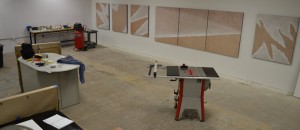 My art studio is located deep in the bowels of south St. Louis. It’s a dodgy part of town and, from the outside, the building where my studio is located looks like a place where serial killers would come to cut up their victims. But inside, the space is very nice.
My art studio is located deep in the bowels of south St. Louis. It’s a dodgy part of town and, from the outside, the building where my studio is located looks like a place where serial killers would come to cut up their victims. But inside, the space is very nice.
I have 1,500 square feet of bright white work area, 12′ high ceilings, and lots of amenities like enough power outlets for a small city, a big electrical box so we never lose juice, and a peg board that can hold all the tools in a Home Depot.
Tim is the guy who owns the building. He’s an engineer. I like having an engineer own the building rather than an artist, accountant, lawyer or insurance agent. When things go wrong in a building, you want a guy who knows how to do stuff, not a guy who makes his living running income statements. Engineers know how to do stuff and because they’re engineers, they usually over-engineer a solution so the problem is fixed for the next millenium. This is Tim’s first foray into building ownership and management. I’m his first tenant.
My former studio was located on a third-floor walkup in an old brewery. Every time I stepped into the building I’d get a flashback to when I lived in New York City in the mid-70s. My studio then was close to Bedford-Stuyvesant, which at that time was the 2nd worst neighborhood in America. You’d practically need combat pay just to get in and out of the place.
My brewery studio had wonderful light, but the windows were loose in their frames and the building was drafty. The owners seldom turned on the heat in the winter and there was no air conditioning in the summer, so for half or more of each year, I’d either be shaking or sweating. But the street had large, mature trees. There was a friendly bar just outside, a shop that sold pies a few doors down, several antique stores, and the local coffee house two blocks away was grand. They had a small reading library so, if you wanted to, you could buy a cheap lunch, find a warm spot and read Elmore Leonard all afternoon.
I stuck it out for about 15 months at the old studio, but when winter came the second time around, I just couldn’t take the cold any more. So I flew south about 8 blocks to greener pastures and central heating.
If you’re in the neighborhood, stop in and have a cool drink from the community water fountain. I’ll play some jazzy tunes from the ipod and we can snap our fingers and call each other ‘man,’ just like artists are supposed to do. And depending on how I feel that day, I may even put on a beret.
29 Dec 2011
Music for Making Art
I had an artist friend who never listened to music while she worked and seldom listened to music at other times. Personally, I think this is inconceivable. I can’t imagine not listening to music while creating art. For me, music is a muse and inspires the other art senses.
In no particular order, here are some of the tunes I like to play while in my studio. I usually crank them up to ‘Jive and Wail’ levels. Even though I’ve chosen one track from each artist, I generally listen to multiple tracks at a time.
(By the way, I’m sorry I couldn’t get this list to line up left and right. The justify function doesn’t seem to be working on my blog. I hate when that happens! I’m anal-retentive when it comes to lists.)
Title Artist
Until You Come Back to Me …………….. Aretha Franklin
Ocean Beach………. The Mighty Black Orchestra
Tangled Up In Blue…………….. Bob Dylan
Wings for Sarah…………….. Bob James
Where is Love…………….. Bobby Caldwell
Beyond the Sea…………….. Bobby Darin
Nick of Time…………….. Bonnie Raitt
I’m on Fire…………….. Bruce Springsteen
What are You Doing the Rest of Your Life…………….. Chris Botti and Sting
Viva La Vida…………….. Coldplay
Badge…………….. Cream
My Mate Paul…………….. David Holmes
New Frontier…………….. Donald Fagen
Peaceful Easy Feeling…………….. The Eagles
September…………….. Earth, Wind & Fire
Change the World…………….. Eric Clapton
Fall in Love…………….. Estelle
Gypsy…………….. Fleetwood Mac
Late Night Session…………….. Fluff
Noodle Soup…………….. Four80East
Crazy…………….. Gnarls Barkley
Route 101…………….. Herb Alpert
Yah Mo B There…………….. James Ingram
Shower The People…………….. James Taylor
All for You…………….. Janet Jackson
Steppin’ Out…………….. Joe Jackson
Rainbow Seeker II…………….. Joe Sample
Save Room…………….. John Legend
Callie…………….. Joyce Cooling
How ‘Bout That…………….. Kevin Toney
Smiles and Smiles to Go…………….. Larry Carlton
Something About You …………….. Level 42
Walk On The Wild Side…………….. Lou Reed
Cubanova…………….. Marc Antoine
Diggable…………….. Marion Meadows
What’s Going On……………. Marvin Gaye
Rock With You…………….. Michael Jackson
It’s Been Too Long…………….. Nick Colionne
Restless Feeling…………….. Nick Lowe
Pacific Coast Highway…………….. Nils
Minuano…………….. Pat Metheny
Graceland…………….. Paul Simon
Caravan of Dreams…………….. Peter White
Islands…………….. Phillip Glass
One for the Girls…………….. Rick Braun
Under My Thumb…………….. The Rolling Stones
Sunrise…………….. Simply Red
Faded …………….. Soul Decision
Sara…………….. Starship
My Old School…………….. Steely Dan
High Noon…………….. Steve Oliver
That Girl…………….. Stevie Wonder
Englishman in New York…………….. Sting
Sapphire Island…………….. The Rippingtons
With Or Without You…………….. U2
She’s All That…………….. Walter Beasley
Are You Sure Hank Done It This Way?…………….. Waylon Jennings
What are the songs that inspire you? Please share. I need more music to add to my iPod.
29 Dec 2011
Revisiting Rothko and Newman.
Left: Mark Rothko, ‘Untitled.’ Right: Barnett Newman, ‘Achilles.’
In my youth, I was an admirer of the painters, Mark Rothko and Barnett Newman. I studied Rothko extensively and wrote a thesis paper on Newman in graduate art school. I always thought Rothko’s work was deeper, more intense, more spiritual and primal. Yet, I admired Newman’s minimalist approach to subject matter, content and palate.
A few months ago, I saw the theatrical play, Red, the story of Rothko in late career. The actor who played the artist interpreted him as loud, bombastic, tortured and a bit of a bully. Perhaps that was Rothko’s true personality, but judging only from his art, I had always pictured him as thoughtful and contemplative, so the two sides of the man didn’t fit well for me. I didn’t think the playwright seemed comfortable in Rothko’s skin. As a result, the play was a disappointment for that and other reasons.
Around the same time, I happened upon that thesis I had written some 30 years earlier and discovered my writing was full of the pretentious, inflated, pseudo-intellectual art speak that one finds in art magazines. Like the play, my paper was a disappointing read.
I’m still of fan of Rothko’s work. Visually, his paintings have held up well over many years. Newman’s art, on the other hand, looks thin, shallow and vacant. Not sure what I thought all the excitement was about.
— Mark Travers
20 Dec 2011
The Business Value of Art.
It is estimated that the arts return $8 in economic output for every $1 in investment received. Economic value is measured as a better engaged and more productive workforce, a more stable and diversified workforce, a more vibrant and attractive community, a better-educated local population, and the number of tourist dollars flowing in from outside the community. If someone said: “You give me $1 and I’ll give you $8 back,” you’d think that was a pretty good deal, right? Cutting subsidies to the arts is not just pound foolish, it’s counter-productive to job creation and regional economic vitality.
— Mark Travers
19 Dec 2011
